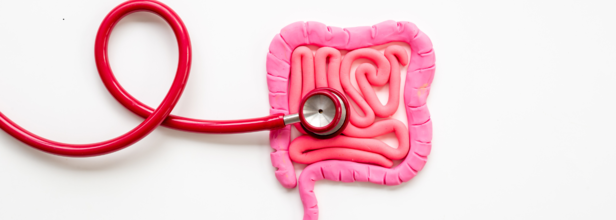- Health Conditions A-Z
- Health & Wellness
- Nutrition
- Fitness
- Health News
- Ayurveda
- Videos
- Medicine A-Z
- Parenting
Bowel Cancer Screening At Home, Know All About It

Credits: Canva
Bowel cancer is one of the most prevalent types of cancer in the UK, and per the Bowel Cancer UK Organisation, almost 44,000 people are diagnosed with bowel cancer every year in the UK. More than nine out of 10 new cases are diagnosed in people over the age of 50.
In US, As per the American Cancer Society, it can show up in 1 in 23 for men and 1 in 25 for women. It is also the third most common type of cancer in the US, after lung and breast cancer. It is also the second leading cause of cancer deaths in the country.
The International Agency for Research on Cancer notes that in 2022, more than 1.9million cases of colorectal cancers were diagnosed worldwide, making it the second leading case of cancer deaths worldwide too.
It being such a common cancer is why early detection of the same is vital. The screening process uses a faecal immunochemical test (FIT) to identify traces of blood in a sample of your stool. As blood in stool could be an early sign of bowel cancer.
Who Is Eligible for Bowel Cancer Screening?
Currently, bowel cancer screening is offered every two years to people aged 54 to 74 as per NHS UK. However, this program is expanding, and soon, individuals aged 50 to 74 will also be included. If you’re over 50, you might receive a test kit as part of this update.
The reason for this age range is that the risk of bowel cancer increases as people get older. For those aged 75 or over, screening is still available, but it is not automatically sent out. Instead, you can request a test kit every two years.
If you believe you’re eligible for screening but have not received an invitation or test kit, you can call the helpline to ensure you’re on the screening list.
How Can One Avail The Bowel Cancer Screening Test Kit?
For individuals aged 54 to 74 who are registered with a GP, a home test kit (FIT kit) will be sent by post every two years. If you are over 75, you can request the kit by calling the helpline.
How to Use Bowel Cancer Screening Home Test Kit?
Prepare: Ensure that you kit includes a sample bottle, an envelope and clear instructions It is also important that you write the date on the sample bottle.
Sample Collection: Use a clean container to catch your stool, ensuring it doesn’t touch the toilet water. Open the sample bottle and use the stick attached to the lid to gently scrape your stool. Cover the grooves on the stick with a small amount of stool.
Seal The Sample: Place the stick back into the bottle, close it tightly, and wash your hands thoroughly.
Send It For Test: Put the sealed sample bottle into the provided envelope, seal it, and post it as soon as possible. No stamp is needed.
Results Of Bowel Cancer Screening
If your result says no further tests are required, it means no blood was found.
If your result says you need further tests, it means blood was found in the stool and needs further investigation. This means you will have to book an appointment with a specialist who would talk about your results and would require you to have a colonoscopy. This is when a camera is used to check inside your bowel.
However, it is important to note that blood in stool does not always mean that it is cancer. There could be other reasons like anal fissure or bowel polyps.
Minoxidil Use By Mothers Linked To Potential Health Risks In Infants

Credits: Canva
Mothers who use minoxidil, a widely used hair loss treatment, may increase the risk of infantile hypertrichosis in babies, a condition marked by excessive hair growth across the body, including areas where hair does not usually grow, according to a large international analysis.
Minoxidil Use by Mothers Linked To Potential Health Risks In Infants
Researchers from the Ministry of Health and Family Welfare and the All India Institute of Medical Sciences (AIIMS), New Delhi, reviewed 2,664 worldwide reports of suspected infantile hypertrichosis linked to minoxidil. Of these, 45 cases involved children aged between birth and 23 months.
The analysis showed that 22.2 per cent of these infant cases were associated with maternal exposure to minoxidil. Accidental exposure accounted for 44.4 per cent, while the cause remained unclear in 33.3 per cent of cases. The findings were published in the Archives of Dermatological Research.
What Is Minoxidil?
Minoxidil is a drug most commonly used to treat pattern hair loss, known as androgenetic alopecia, in both men and women. In higher oral doses, it is also prescribed for severe high blood pressure. The medicine works as a vasodilator, meaning it helps widen blood vessels to improve blood flow.
What Is Infantile Hypertrichosis?
Infantile hypertrichosis (also called childhood hypertrichosis or werewolf syndrome) is a rare condition marked by excessive hair growth on the face, back, arms, and other areas, appearing from infancy, often with a genetic cause but sometimes triggered by medications (like minoxidil) or underlying conditions, leading to significant cosmetic and psychological distress despite being a generally harmless cosmetic issue
Minoxidil: Eye-Related Side Effects Also Reported
The study also highlighted concerns beyond infant cases. Researchers identified 1,669 global reports of eye-related adverse effects linked to minoxidil use in the general population, including 25 cases reported from India.
Commonly reported eye symptoms included swelling of the eyelids, blurred vision, and central serous chorioretinopathy, a condition in which fluid accumulates beneath the retina and can affect eyesight.
Background on Minoxidil
Minoxidil was originally developed to treat high blood pressure. It was later reformulated as a topical treatment for hair loss in both men and women after its hair growth–stimulating side effects were observed. The drug is typically applied directly to the scalp or affected skin areas, the researchers noted.
Minoxidil: Concerns Over Regulation and Use
Despite its proven effectiveness, the researchers raised concerns about the drug’s widespread over-the-counter availability and limited regulatory oversight. These factors, they said, increase the risk of misuse and unintended exposure.
Although minoxidil is generally advised against for use during pregnancy and breastfeeding, the analysis still identified cases of infantile hypertrichosis linked to maternal exposure during these periods.
The researchers noted that minoxidil has also been associated with eye-related side effects in the broader population, prompting renewed questions about its overall safety profile.
“This study aims to examine global reports of infantile hypertrichosis associated with maternal minoxidil exposure and to assess serious and non-serious eye disorder cases reported in India, with the aim of improving awareness about the risks of early-life or accidental exposure,” the authors wrote.
The study was based on data collected up to March 2025 from VigiBase, the World Health Organization’s global database of suspected adverse drug reactions.
What To Do When Amoxicillin Gives You Rashes?

Credits: iStock
This year had been a year of flu, fiver, bacterial illness and more. One of the over the counter medicine that many people often buy, or is prescribed, especially for bacterial infections is Amoxicillin.
What Is Amoxicillin?
It is a widely prescribed antibiotic that is used to treat bacterial infections in children and adults. It is part of the penicillin class of medications and it inhibits the growth of bacteria and allows the immune system to efficiently eliminate the infection. It is commonly used to treat bacterial infections affecting the respiratory tract, urinary tract, and skin.
However, about 5 to 10 per cent of children prescribed this may develop skin rashes as a common side effect. A rash can develop in two forms: allergic and non-allergic. A rash from the drug Amoxicillin could last up to a week.
What Kind Of Rashes Are Caused By Amoxicillin?
A Maculopapular rash is a flat rash that occurs like red patches, raised bumps and spreads over the body.
Hives are itchy, raised red or skin-colored welts that can change shape and location.
Erythema Multiforme are more severe, featuring target-like lesions or bull's-eye shapes with central red spot, pale ring, and red outer ring.
Anaphylactic Reaction is a rare but severe allergic reaction that includes symptoms like difficulty in breathing, swelling of the face, lips, or tongue, hives and rapid drop in blood pressure.
Non-Allergic Amoxicillin Rash are flat, red spots that may be slightly raised, but not harmful. These usually appear o the 5th to 7th day after the start of amoxicillin and can appear on the chest, abdomen, back, face, arms, and legs. It may get worse before it starts to get better.
What Signs Should You Look Out For?
Warning signs include rashes within two hours of the first amoxicillin dose, difficulty breathing or swallowing, or very itchy hives.
The allergic reaction is caused by one's immune system reacting to that medication as if it were a foreign invader in the body.
More girls than boys develop these rashes, and in children this is even more common. In fact, the rash by amoxicillin was first noted in 1960s, in children who were being treated with ampicillin, recorded the Journal of Pediatrics.
What Can You Do If You Get Amoxicillin Rashes?
Among treatment, the first step should be to see your physician and immediately stop taking the medication. Drinking water and enough fluids can also help. Your doctor too would prescribe you medications and lotions to soothe your itching.
Hives can also be treated with the over the counter drug Benadryl. However, you must go see your doctor or GP, and not self medicate.
A doctor may treat the rash in various ways, including stopping the medication as the first line of defense. Then the doctor may give oral antihistamines (e.g., cetirizine) for the itch. Some doctors may use topical steroids to help with the itch and redness.
Before visiting your doctor, take photos of your rash, send it to your GP, as if it is contagious. Even after you start the treatment, stay in touch with your healthcare provider for any development.
36% Of Rabies Death Comes From India: This Is What You Should Do After A Dog Bite, Explains Doctor

Credits: iStock
The World Health Organization (WHO), notes that 36% of world's rabies deaths come from India, and a 2024 Lancet study notes that the country accounts for over one-third of global rabies deaths. When we spoke to Dr Aniket Mule, Consultant Internal Medicine at KIMS Hospital, Thane, he said that it is not just dog bites that lead to rabies, but it could happen from any rabies-susceptible animal. The first line of defense after you clear your wound immediately is to get the rabies vaccine. "Rabies vaccination is required for bites or scratches from any rabies-susceptible animal, including cats, monkeys, bats, foxes, and other wild mammals," he pointed out. As the country's apex court ruled and issued directives on stray dogs, focusing on public safety by ordering their removal, global health organizations, including WHO point out that this is not the right way to deal with rabies issue. Comprehensive methods including evidence=based strategies that center on mass dog vaccination is the key to the problem.
However, before this could be implemented, here's what you should know about dog bites and rabies.
What To Do After A Dog Bites Or Scratches You?
Dr Mule points out that even when there are minor scratches, without bleeding, you must get a rabies shot. "Rabies can be contracted through broken skin. Such exposures still require medical evaluation and, in most cases, rabies vaccination."
Read: In An 'Exceptionally Rare' Case, Man Dies Of Rabies After Kidney Transplant
What Should One Do Immediately After Being Bitten Or Scratched?
- Wash the wound immediately for at least 15 minutes with soap and running water
- Apply an antiseptic such as povidone-iodine
- Do not apply home remedies like turmeric, chili or oil
- Seek medical care promptly for rabies vaccination and possible immunoglobin
Dr Mule points out that the rabies vaccine should be started as soon as possible. "Ideally within 24 hours of a bite or scratch. However, even if there is a delay of days or weeks, vaccination should still be started immediately as rabies has a variable incubation period," he says.
After the bite, the immediate medical attention involves rabies post-exposure prophylaxis or PEP, and with a tetanus booster. Some rabies vaccines also use saline water as the diluent to reconstitute the freeze-dried powder before injection.
Read: Australia Issues Advisory Warning Travelers Of Counterfeit Rabies Vaccines Found In India
The temperature of the vaccine matters. "Rabies vaccines are temperature-sensitive and must be stored between 2°C and 8°C. Exposure to heat or freezing can reduce vaccine potency. Poor cold-chain maintenance is a known reason for vaccine failure in rare cases," points out the doctor.
Cases Of Rabies Coming Back After Vaccination Course Has Been Done
Dr Mule points out that in order to avoid such things happening, one must ensure immediate wound washing, timely vaccination, and correct use of Rabies Immunoglobulin or RIG. Rabies can come back if these following things occur:
- Delay in starting vaccination
- Failure to administer Rabies Immunoglobulin (RIG) in severe (Category III) exposures
- Improper wound cleaning
- Incorrect injection site (gluteal region)
- Poor vaccine storage (cold-chain failure)
Dr Mule points out that the vaccine should be given intramuscularly in the deltoid or upper arms for adults, as gluteal or buttock injections could lead to inadequate absorption and reduce effectiveness.
How Many Doses Should One Get?
- For someone not previously vaccinated, the current standard is 4 doses on days 0, 3, 7, and 14 (intramuscular schedule).
- In some government programs or intradermal schedules, 3–4 doses may be advised.
- Previously vaccinated individuals require only 2 booster doses (days 0 and 3).
The exact schedule depends on vaccination history and the protocol followed.
© 2024 Bennett, Coleman & Company Limited

